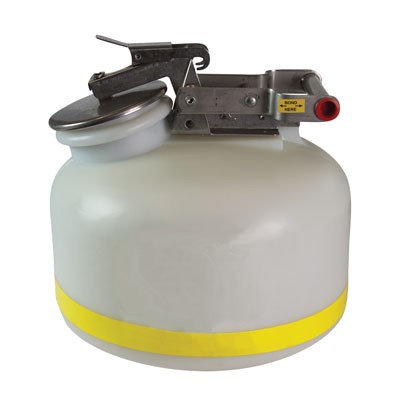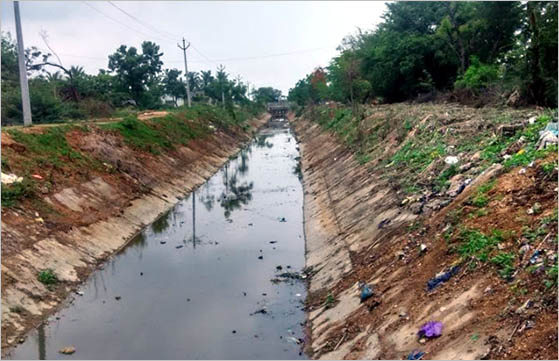Safe and Sustainable Liquid Waste Disposal: Your Go-To Service Provider
Safe and Sustainable Liquid Waste Disposal: Your Go-To Service Provider
Blog Article
Comprehending the Comprehensive Process of Fluid Garbage Disposal: Best Practices and Environmental Effect Considerations
The management of liquid waste disposal is a complex issue that calls for a complete understanding of numerous finest practices and their linked ecological effects. From the kinds of fluid waste generated to the techniques employed for collection, treatment, and last disposal, each step plays a critical function in safeguarding ecosystems and public wellness. As regulative requirements progress and modern technology breakthroughs, the conversation around these processes comes to be progressively relevant. What implications do these changes hold for future sustainability efforts, and just how can stakeholders guarantee that they are properly addressed?
Kinds Of Fluid Waste
Comprehending the various kinds of fluid waste is necessary for effective management and disposal methods. Fluid waste can be generally classified into several kinds, each requiring special handling and therapy approaches.
Industrial fluid waste usually contains harmful products, including heavy metals, solvents, and chemicals, created throughout manufacturing processes. These wastes necessitate strict regulative conformity to protect human wellness and the environment. Domestic fluid waste largely describes wastewater generated from homes, including sewer and greywater, which, although much less harmful, can still position substantial threats if poorly managed.
Agricultural fluid waste, consisting of overflow from ranches, frequently has plant foods and pesticides that can lead to ecological destruction otherwise dealt with adequately. Medical liquid waste, produced from health care centers, consists of polluted fluids such as physical fluids and chemicals, needing specialized disposal methods to avoid infection and ecological contamination.
Last but not least, oil and grease waste, generally produced by dining establishments and automotive markets, can trigger serious blockages in drain systems otherwise taken care of effectively. Comprehending these classifications helps with targeted strategies for therapy, compliance with regulations, and efficient disposal approaches, eventually promoting environmental sustainability and public health safety and security.

Collection Approaches
Reliable collection techniques are essential for the proper administration of liquid waste, guaranteeing that it is gathered securely and successfully before therapy or disposal. Various techniques are used depending on the kind of fluid waste created, the quantity, and the certain characteristics of the waste.
One typical approach is making use of dedicated collection containers or sumps, which are developed to record liquid waste at the source. These systems commonly incorporate pumps that facilitate the transfer of waste to larger storage containers or therapy centers. Furthermore, mobile collection systems outfitted with vacuum modern technology are utilized in scenarios where waste is generated intermittently or in hard-to-reach places.
For industrial setups, closed-loop systems can successfully minimize leaks and spills, enabling the recuperation and reuse of liquid waste. It is also vital to train employees on proper collection protocols to mitigate dangers associated with unsafe compounds.
In addition, implementing normal upkeep schedules for collection tools makes certain optimal efficiency and security. The integration of innovative surveillance systems can enhance collection efficiency by offering real-time information on waste degrees and possible hazards. Overall, efficient collection methods are fundamental to lasting liquid waste administration practices.
Treatment Processes
Therapy procedures play an important role in the monitoring of fluid waste, transforming possibly hazardous materials into safe effluents or reusable resources - liquid waste disposal. These processes can be generally categorized right into physical, chemical, and biological methods, each customized to deal with certain contaminants existing in the waste stream
Physical treatment techniques, such as sedimentation and filtration, job by getting rid of put on hold solids and particle issue. These methods are commonly the very first step in the therapy news chain, successfully minimizing the tons on subsequent procedures. Chemical treatments include the usage of reagents to neutralize dangerous compounds, speed up heavy metals, or oxidize organic contaminants, thus improving the security of the effluent.
Organic treatment procedures, consisting of triggered sludge systems and anaerobic digestion, maximize the natural capacities of bacteria to weaken natural matter. These methods are specifically effective for wastewater consisting of eco-friendly pollutants. Advanced therapy modern technologies, such as membrane purification and progressed oxidation processes, are progressively utilized to attain higher levels of filtration.
Integrating a mix of these therapy methods not only ensures compliance with regulatory requirements yet likewise advertises ecological sustainability by recouping valuable sources from fluid waste.
Disposal Options
Exactly how can organizations ensure the liable and secure disposal of fluid waste? Reliable disposal choices are essential for protecting public health and the setting. The primary methods consist of land disposal, incineration, and therapy followed by discharge into local wastewater systems.
Land disposal includes the cautious containment of liquid waste in assigned land fills, guaranteeing that it does not view seep right into surrounding soil or water. Incineration, on the other hand, topics fluid waste to high temperatures, converting it right into ash and gases, which require correct filtration to minimize exhausts. This technique is suitable for contaminateds materials that can not be dealt with with standard ways.
In situations where fluid waste can be dealt with, companies might go with organic or chemical treatment procedures to counteract damaging components before discharging the treated effluent into local systems. This path usually aligns with governing needs, making certain that the effluent fulfills safety criteria.
Eventually, companies must carry out thorough evaluations of each disposal choice to identify its stability, thinking about aspects such as waste make-up, governing conformity, and potential risks to health and wellness and the setting. By choosing suitable disposal methods, organizations can add to a responsible waste management technique.
Environmental Influence
The environmental influence of fluid waste disposal is a vital factor to consider for organizations looking for to decrease their eco-friendly footprint. Improper disposal approaches can bring about significant contamination of water sources, soil degradation, and negative results on regional environments. For circumstances, dangerous fluids can leach into groundwater, posing threats to alcohol consumption water supplies and water life. In addition, the discharge of without treatment or inadequately treated waste into surface area waters can lead to eutrophication, bring about oxygen exhaustion and the succeeding death of fish and various other microorganisms.

To minimize these influences, organizations should take on best methods such as applying rigorous waste therapy procedures, promoting recycling and reuse, and sticking to governing requirements. By taking a proactive strategy to fluid waste management, entities can substantially lower their environmental impact while supporting lasting development goals. Ultimately, an extensive understanding of the environmental influences connected with fluid garbage disposal is vital for notified decision-making and responsible stewardship of natural deposits.
Verdict
Reliable monitoring of fluid waste is vital for guarding ecological honesty and public wellness. By embracing finest practices in disposal, treatment, and collection, alongside adherence to regulative criteria, the capacity for unsafe contamination of see this here ecosystems can be dramatically reduced. Constant developments in technology and processes add to lasting waste management efforts. Inevitably, a detailed understanding of fluid garbage disposal not just minimizes ecological impacts but likewise promotes a commitment to accountable resource administration and environmental stewardship.
The monitoring of liquid waste disposal is a multifaceted problem that calls for a comprehensive understanding of various ideal methods and their connected ecological impacts. From the kinds of fluid waste generated to the techniques employed for collection, treatment, and final disposal, each action plays a vital duty in protecting ecosystems and public health and wellness.The ecological effect of liquid waste disposal is a critical consideration for companies seeking to lessen their environmental footprint. Eventually, a detailed understanding of the environmental influences associated with fluid waste disposal is necessary for educated decision-making and responsible stewardship of all-natural resources.
Eventually, a thorough understanding of fluid waste disposal not just alleviates environmental effects however additionally cultivates a commitment to liable source management and environmental stewardship.
Report this page